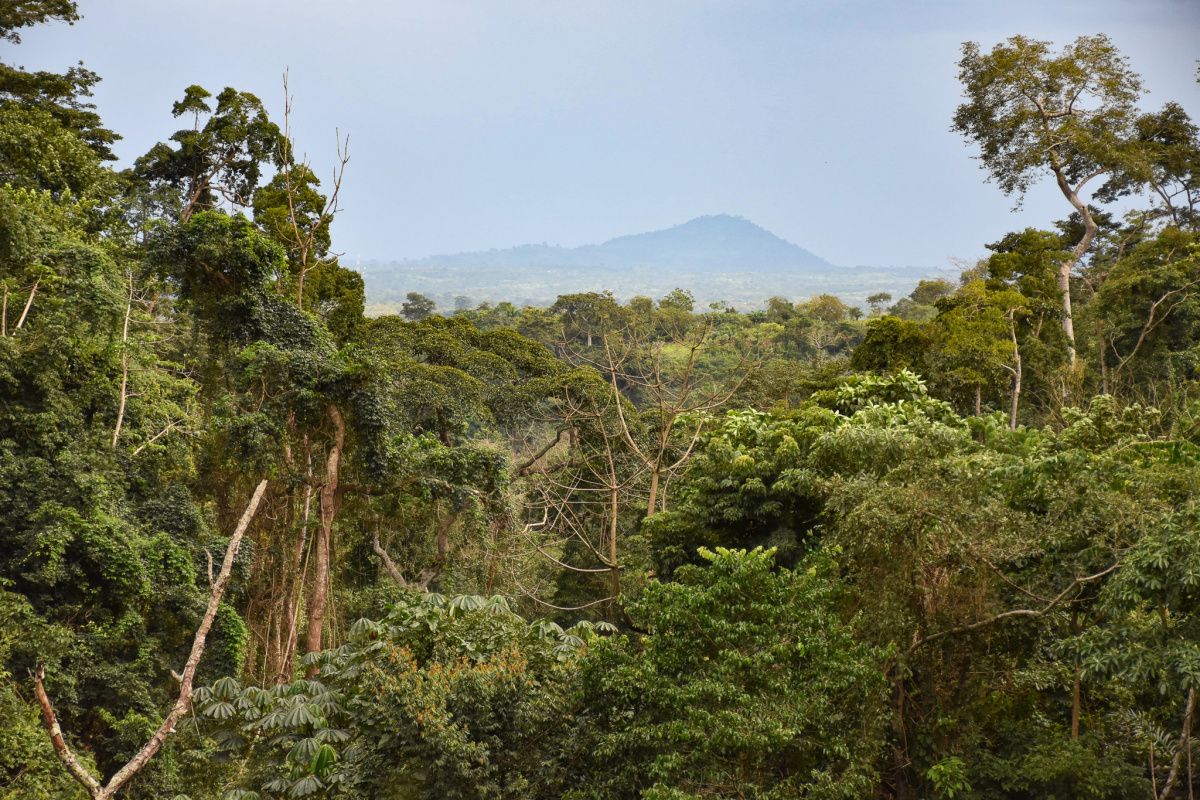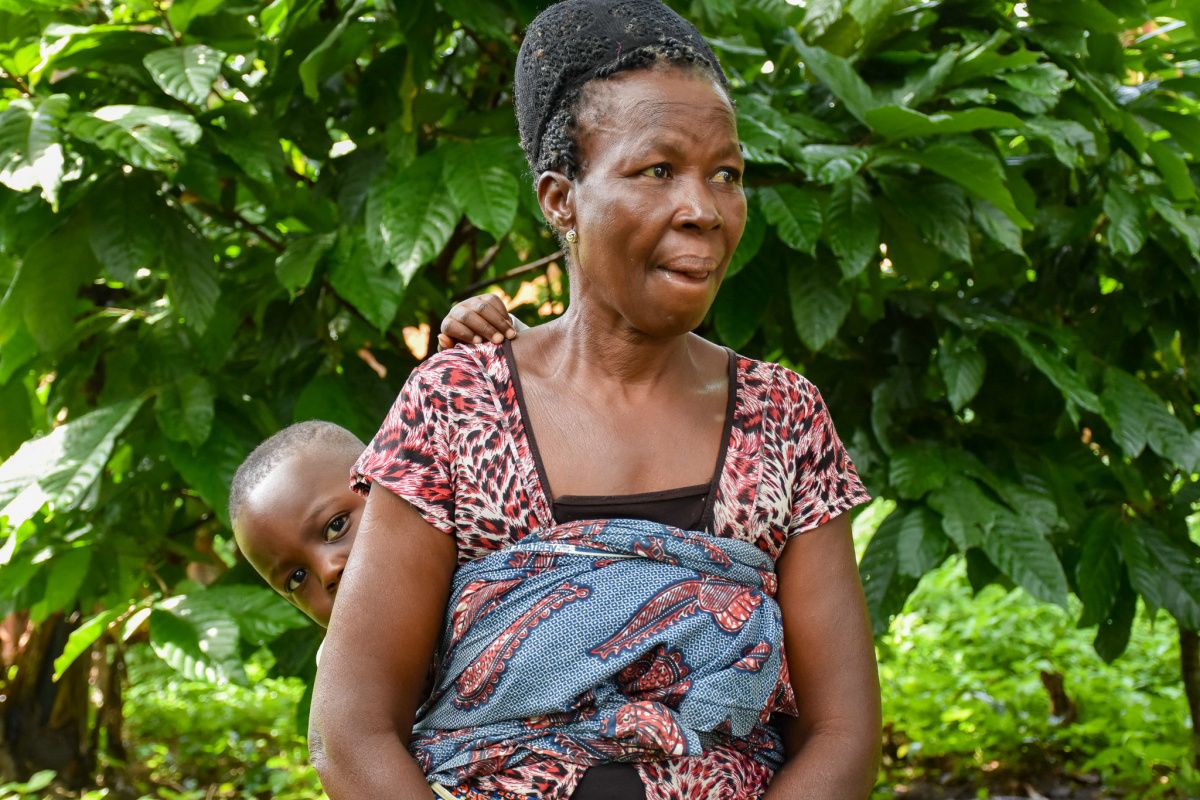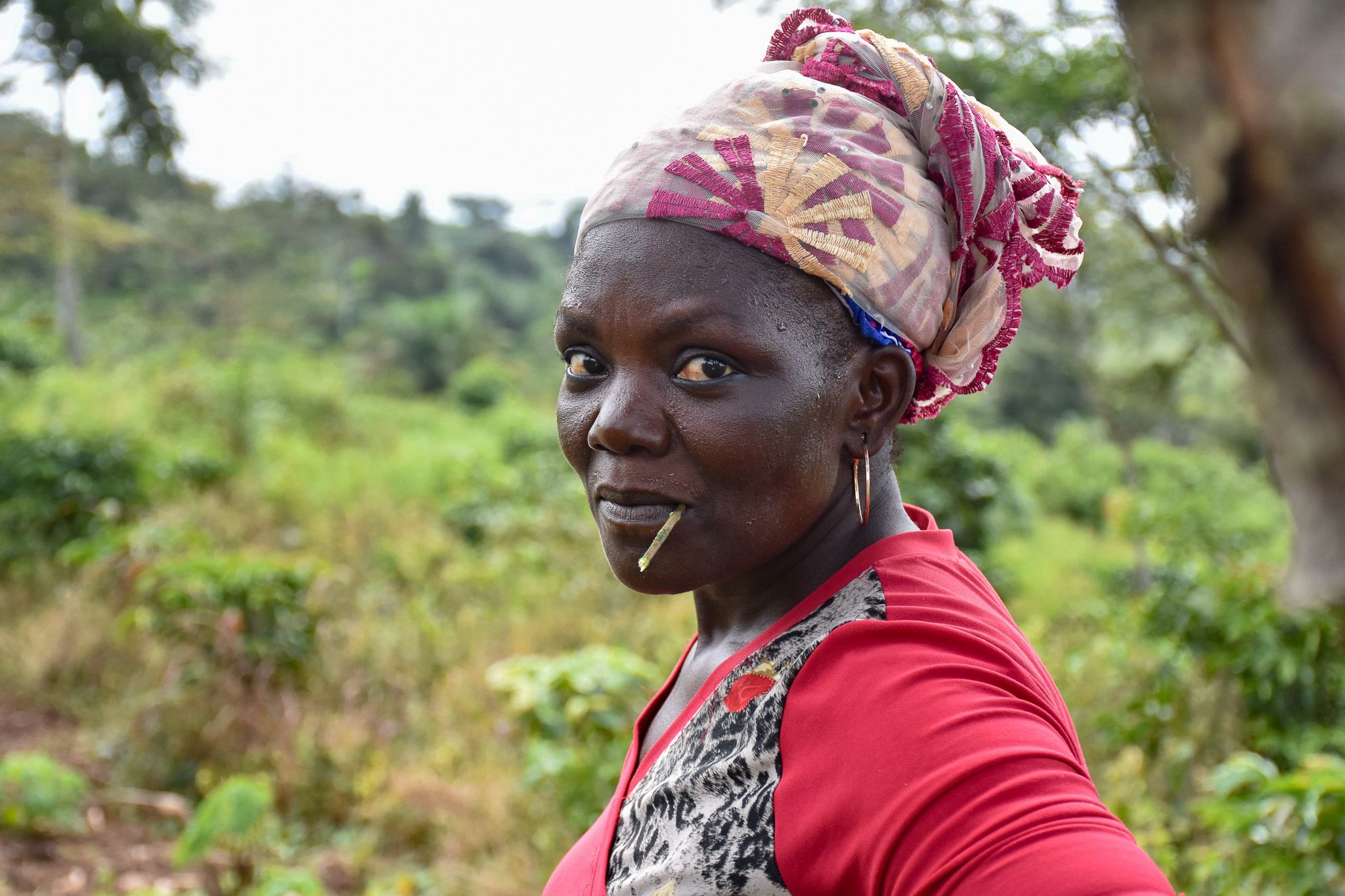
This part of Togo is characterised by its rolling landscapes and vast plateaux with mountains and waterfalls, whose high altitudes are home to a variety of crops with high potential. Reforest’Action forestry experts visited the area to follow up on the project in October 2022. With tropical temperatures reaching up to 38°C, they crossed the steep valleys of the Wawa and Akebou prefectures within the Plateaux Region, to meet with the producers who were involved in implementing the project.
The mysteries of the Saman rain tree
Within the agroforestry fields of the farmers' families, fertilising and forestry trees as well as fruit trees have taken root. Nearly 22 diversified species thus allow the establishment of agroecosystems conducive to the preservation of the soil, the productivity of agricultural land but also the development of additional income for producers and their families.
Among the species selected, the Samanea Saman is one of the hardiest trees in the forest. It stands out thanks to its structure, the circumference of its trunk and the shape of its umbrella-like crown which can grow to more than 500 m in diameter.
At night and when rainclouds roll in, its leaves, or leaflets, fold up, allowing rain to fall to the ground and water its roots. When the rain clears, the leaves spread back out to soak up the sunshine. The sunlight is unable to penetrate the thick crown, which keeps the ground cool and moist and full of nitrogen for other plants, creating the perfect conditions for flora to grow beneath it.
The Saman’s “miraculous” benefits have made it emblematic for producers. In many countries, including Togo, Madagascar and Indonesia, it is used in agroforestry as a shade tree in cacao and coffee plantations.

Togolese agroforestry using fertilising trees
The forest is the biggest resource for the local communities. Local producers are committed to restoring this ecosystem as their land and crops are directly affected by climate change. In manioc, corn, peanut, coffee and cacao plots, they are helping to restore their environment through agroforestry using fertilising trees. Agroforests have spread throughout the 57 villages in the Wawa prefecture, with plantations that are home to majestic trees of an impressive size.
Known to grow quickly and be hardy, the shade trees and fertilising trees chosen for this project, such as Samanea Saman and Albizia have numerous benefits for cash crops, food and market gardening crops:
- They provide protective cover for agricultural plants such as cacao and coffee.
- As true natural fertilisers, these species prevent the need for chemical fertilisers, helping reduce plots’ maintenance costs.
- The roots of trees on steep slopes help stabilise the ground and limit soil erosion.

Measuring captured carbon
Our partner, APAF Togo, has strong links to the local communities and depends on regional networks. The organisation puts local communities back at the heart of the project, hiring local teams with excellent knowledge of the area.
Twenty years after it was founded, the association wants to assess the results of its work and is rolling out a monitoring tool and certifying their expertise by measuring the amount of carbon captured by the fertilising trees. This system also helps evaluate the success of the model established two decades ago when deforestation was rife. Today, this reforestation work is paying off, with convincing results.

Agroforestry techniques using fertilising trees
Committed to sustainable production, the project aims to help APAF Togo popularise agroforestry techniques using fertilising trees among rural communities. Agroforestry is an age-old technique combining trees with crops and that dismisses monocultures in favour of regenerative synergies. It helps make communities more resilient and more adaptable to climate change.
Starting with what was already present, the association analysed the trees best suited to the crops. The method used in successful plots was then replicated elsewhere. Today, this project is paying off. The actions carried out between February 2022 and October 2022 saw 425 rural families from 15 villages in Togo’s Western Plateaux Region trained on various agroforestry techniques using fertilising trees. The project initially involving 450 000 trees, overpast its objective: 700,000 fertilising, fruit and forest trees are planted across 687 hectares of agroforestry fields and 10 hectares of forests, while new equipment for nurseries are provided.

Fertilising trees enrich, restructure and restore soil. The Togo project focused on fertilising trees and training the Togolese to provide a natural and systemic solution to soil degradation – addressing both the causes and the effects. Combining these species together with agroforestry can reverse the land degradation process, utilising ecologically stable and economically viable systems. This sustainable use of resources helps ensure lasting balance for fragile tropical soils, combat desertification, increase productivity and ensure long-term food security.